Invasive alien species (IAS) are inevitable in today’s world. Factors like globalization, human activities, and climate change have intensified the dispersal of several species of IAS into different regions and ecosystems. IAS have disastrous socio-economic and environmental impacts once they are established in their new environments. There have been negative effects on sectors like agriculture, fisheries, and tourism as well as on food security, and human and animal health. Below is a listing of the current invasive alien species present in the Caribbean region. Learn more about this from our policy brief ‘Invasive Species Threaten Livelihoods and Valuable Biodiversity in the Caribbean.’
1) Lionfish (Pterois volitans) – This invasive species is carnivorous fish that has rapidly increased in the Region. It reduces native fish populations and feeds on important commercially important fish species like the parrotfish, the juveniles of the spiny lobster (Panulirus argus), grouper, and snapper. Its appetite has removed important herbivorous fishes that protect coral reefs by consuming macro-algae and preventing algal overgrowth.
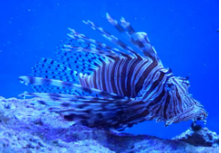
2) Small Indian Mongoose (Urva auropunctatus) – First introduced to oceanic islands as a form of biological control for the growing rat and snake population, it became too effective. It preys on native reptiles, birds, and other vertebrates. It is a carrier and transmitter of diseases like leptospirosis and rabies. The hawksbill turtles, especially newborn turtles (Eretmochelys imbricata L.) are critically endangered because of this species.
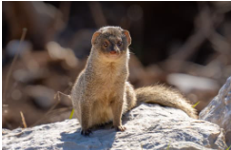
3) Giant African Snail (Achatina Fulica) – This plant pest is a hermaphrodite species that can produce up to 1,200 eggs in a year. It alters habits, outcompetes other snails for food, and feeds on native vegetation, creating various problems for those in agriculture. It is a vector for diseases like eosinophilic meningitis caused by the parasite rat lungworm.
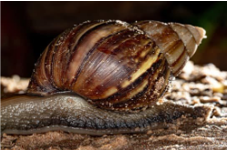
4) Frosty Pod Rot (Moniliophthora roreri) – This invasive disease affects cocoa caused by the fungus Moniliophthora roreri. Frosty pod rot spores may be dispersed by wind conditions. Symptoms of this disease include tan or white powder on the pod’s surface, and pod distortion that may develop into an asymmetric shape or mosaic in patterns of green, yellow, or cream. Frosty pod rot rots the pod’s interior while destroying the beans.
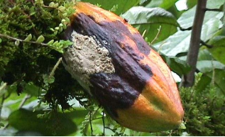
5) Pink Hibiscus Mealybug (Maconellicoccus hirsutus Green) – The pink hibiscus mealy attacks different types of plant species. Symptoms of infestation are sooty mold on fruits (aesthetical unmarketable), honeydew, leaf drop, severe distortion, and stunting and death. It was first reported in the 90s, resulting in an estimated loss of US $18.3 million in Trade.

6) Senegalese Tick, Tropical Bont Tick (Amblyomma variegatum Fabricius) – This invasive pest is a cause of heartwater disease in domestic animals. It is caused by a micro-organism through a bite, which leads to skin lesions, the lesions may display signs of acute dermatophilosis caused by the bacteria Dermatophilus congolensis, which is the main vector for Cowdria ruminantium. The symptoms of heartwater are often unusable and poor-quality hides, loss of milk production, weight loss, and sometimes death of the animal.
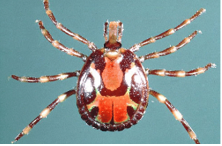
7) Red Palm Mite – (Raoiella indica Hirst) – It is an invasive pest of the areca palm, date palm, and coconut. This mite is visible to the naked eye and is found on the underside of leaves. Dispersal of this mite through handmade crafts like hats, bowls, and seed coconuts, may harbour viable eggs and live mites.

8) Green Monkey (Chlorocebus sabaeus) – This invasive alien species was first introduced in the 17th century. It has impacted local agriculture with its wide appetite, but biological experts are currently researching its impact on biodiversity.
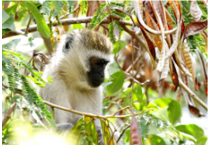
9) Coral Vine/ Coral Creeper (Antigonon leptopus) – Outcompetes understorey plants, smothers native trees, and alters fire regimes. It is an invasive vine that grows in any soil type. Its tuberous roots are difficult to control, and the roots enable vegetative propagation.
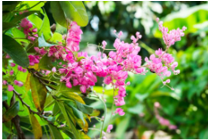
10) Wild Tamarind, Jumbie Bean (Leucaena leucocephala) – Displaces indigenous plant species, and renders extensive areas inaccessible and unusable by forming a large monoculture. It displaces native species and it displaces to eliminate.
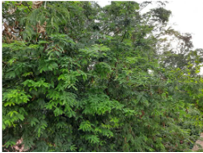
Prevention is the most effective form of invasive alien species management. A series of risk assessments have been conducted for Barbados and the OECS countries to identify non-indigenous species that should be monitored and the implementation of management or extermination programmes. Read more about this from our policy brief ‘Prevention and Management of Marine Invasive Alien Species in the Caribbean.’
Read more from our sources below!
Source:
Policy Brief – Invasive Species Threaten Livelihoods and Valuable Biodiversity in the Caribbean
Policy Brief – Prevention and Management of Marine Invasive Alien Species in the Caribbean